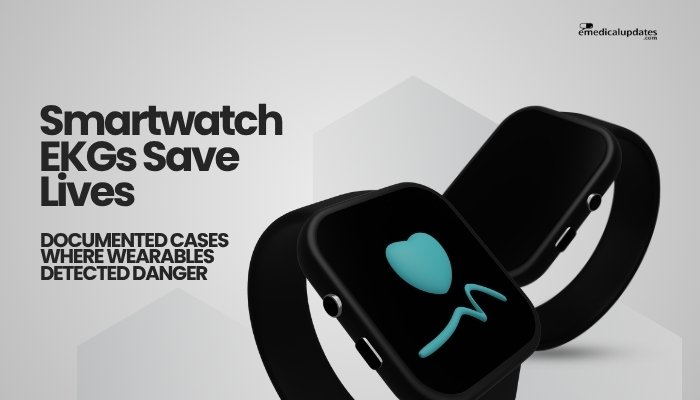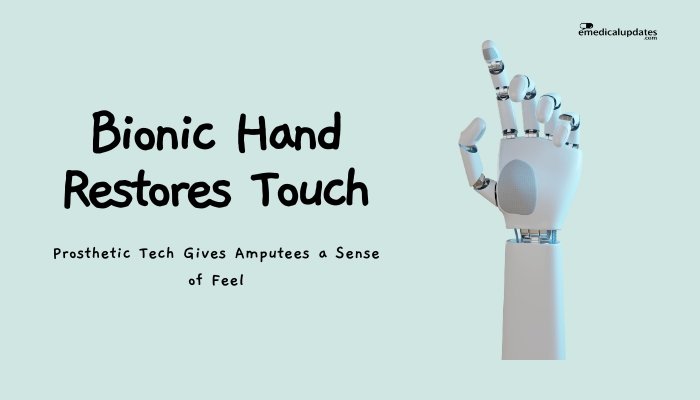Introduction
Wearable devices have evolved beyond simple step counters or smartphone notifications. Modern smartwatches, equipped with electrocardiogram (ECG/EKG) capabilities, can help users detect irregular heart rhythms like atrial fibrillation (AFib). On numerous occasions, this feature has alerted individuals and even helped them avoid life-threatening cardiac events.
Although not a substitute for clinical diagnoses, these wearables play a growing role in real-time health monitoring. Here, we explore how smartwatch EKG technology works, stories where it spotted cardiac danger, and the implications for future consumer health devices.
How Smartwatch EKGs Work
Optical Sensors and Electrodes
Many popular smartwatch models include:
- Optical Heart Rate Sensors: Use photoplethysmography (PPG) to track pulse.
- EKG/Electrode Setup: At least one electrode on the back of the watch, another on a side button or crown. When the user places a finger on that contact, a closed circuit forms across the chest, allowing an EKG reading.
Detecting Arrhythmias
The watch records heart rhythm for around 30 seconds, analyzing:
- Pulse Wave: Searching for irregular spacing between beats.
- Rate and Pattern: Noting if intervals suggest AFib, bradycardia, or other anomalies.
- User Notification: If abnormal, the device prompts the user to consult a healthcare professional or urges an immediate checkup.
Documented Cases of Early Detection
Atrial Fibrillation Alerts
There are multiple user reports where a smartwatch EKG alerted them to an irregular heart rhythm (AFib). For instance:
- Case 1: A retired teacher felt dizzy occasionally but assumed it was dehydration. After repeated smartwatch notifications of irregular rhythm, she saw her doctor—confirming AFib—and started therapy that prevented a possible stroke.
- Case 2: A young professional received watch alerts multiple nights in a row. A cardiologist discovered paroxysmal AFib episodes, prescribing medication to avoid more dangerous developments.
Life-Threatening Tachycardia
Some wearables have flagged dangerously fast heart rates. In rare situations, individuals discovered they were having supraventricular tachycardia (SVT) or other arrhythmias that demanded urgent care. Swift intervention might have averted complications like fainting or heart failure.
Silent Heart Issues in Asymptomatic Individuals
Not all arrhythmias produce clear symptoms. A user might get repeated high/low heart rate warnings or an “inconclusive” EKG reading prompting further testing. Doctors sometimes uncover underlying conduction problems or undiagnosed structural heart disease—a discover that can be life-saving.
Limitations and Accuracy
Not a Medical-Grade Device
While these wearables can provide single-lead EKG data, hospital/clinic EKG machines (12-lead) remain the gold standard for diagnosing subtle or complex cardiac issues. The watch:
- Might Miss: Rare or fleeting arrhythmias if the user doesn’t run an EKG at the correct time.
- Could Show False Alarms: External vibrations, improper wearing, or motion artifacts produce inaccurate readings.
Confirmatory Testing Required
If a smartwatch flags an arrhythmia, a professional evaluation with a multi-lead EKG or Holter monitor is generally needed for a definitive diagnosis. The watch provides an early alert, not a final medical verdict.
Impact on Healthcare and Society
- Increased Public Health Awareness: Wearable EKG alerts push people to see a cardiologist earlier, improving management of heart conditions.
- Preventative Care: Early detection of AFib or other arrhythmias helps prevent strokes, heart failure, and other serious events.
- Reduced Strain on ERs: Timely detection and outpatient follow-up can keep patients stable, avoiding emergency crises.
Looking Ahead: Future Developments
Expanding Diagnostics
Companies explore more advanced sensors—like multi-lead or advanced AI—on wrist-based or ring devices. These could detect additional arrhythmias or even early signs of ischemia.
Integration with Telehealth
Real-time data from watch EKGs might feed directly to telehealth platforms, letting doctors monitor at-risk patients remotely, adjusting medication or scheduling immediate visits if the data suggests acute issues.
Regulatory Pathways
As the technology matures, regulatory agencies (like the FDA in the U.S.) continue to refine guidelines balancing accessibility with user safety. Future updates may allow deeper features if validated in robust clinical studies.
Frequently Asked Questions
- Is my smartwatch EKG as accurate as a hospital EKG?
- Not exactly. Your watch uses a single-lead system, good for spotting big arrhythmias but less comprehensive than a 12-lead in a clinical setting.
- Should I see a doctor if my watch flags an AFib alert?
- Yes. Contact a medical professional for thorough assessment and possible advanced diagnostics.
- Can a watch EKG detect a heart attack?
- Not reliably. Single-lead EKG can’t fully diagnose heart attacks. If you suspect a heart attack, call emergency services immediately.
- Do I need a monthly subscription or app?
- Some devices charge for advanced analytics. Basic EKG features might be included, but check brand-specific details.
- How big is the risk of false alarms?
- Movement or improper fit can cause spurious readings. Regular calibration and correct usage reduce false positives.
Conclusion
With EKG-capable smartwatches, consumers gain unprecedented access to real-time heart rhythm analysis on their wrist—a boon for early detection of atrial fibrillation and other potentially dangerous arrhythmias. Documented incidents exist of users promptly seeking medical help when the watch flagged anomalies, preventing serious complications or guiding them toward needed treatment. While these wearables are no replacement for a full clinical workup, they demonstrate how consumer technology can empower patients to actively monitor their health. As AI algorithms improve, the line between consumer gadget and medical tool continues to blur—bringing wearable heart monitoring into the mainstream of preventative cardiology.
References
-
Perez MV, et al. (2019). “Large-scale assessment of a smartwatch-based pulse detection.” NEJM.
-
Bumgarner JM, et al. (2020). “Feasibility of a wearable echocardiogram for AF detection.” J Am Coll Cardiol.
-
FDA (2023). “Guidelines on consumer wearable EKG devices.”
-
Heart Rhythm Society. (2022). “Wearable technology in arrhythmia detection.”







